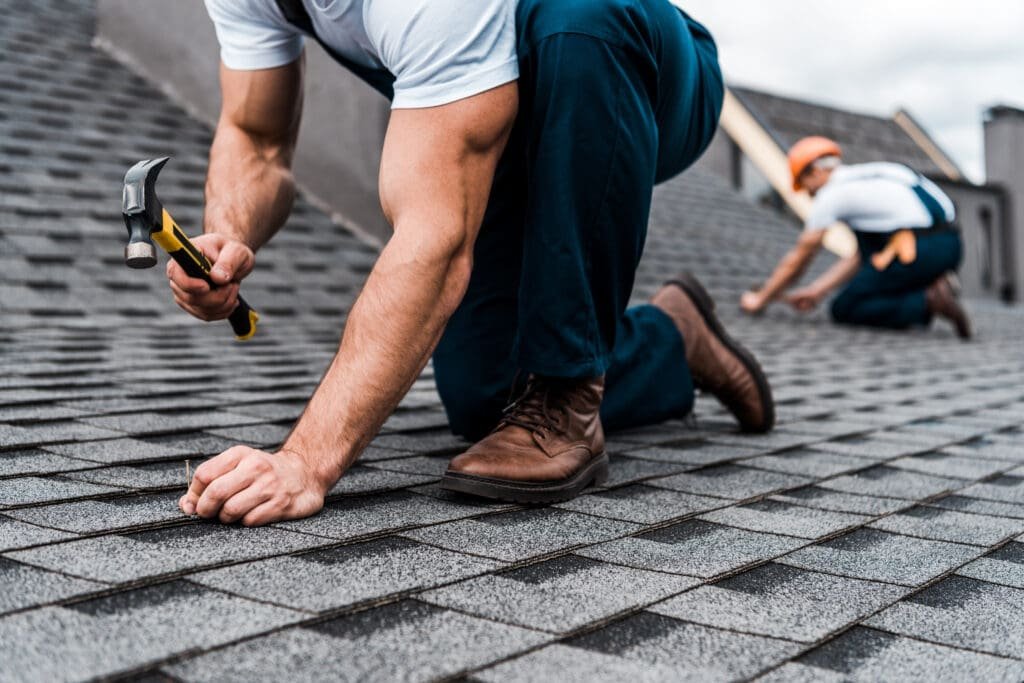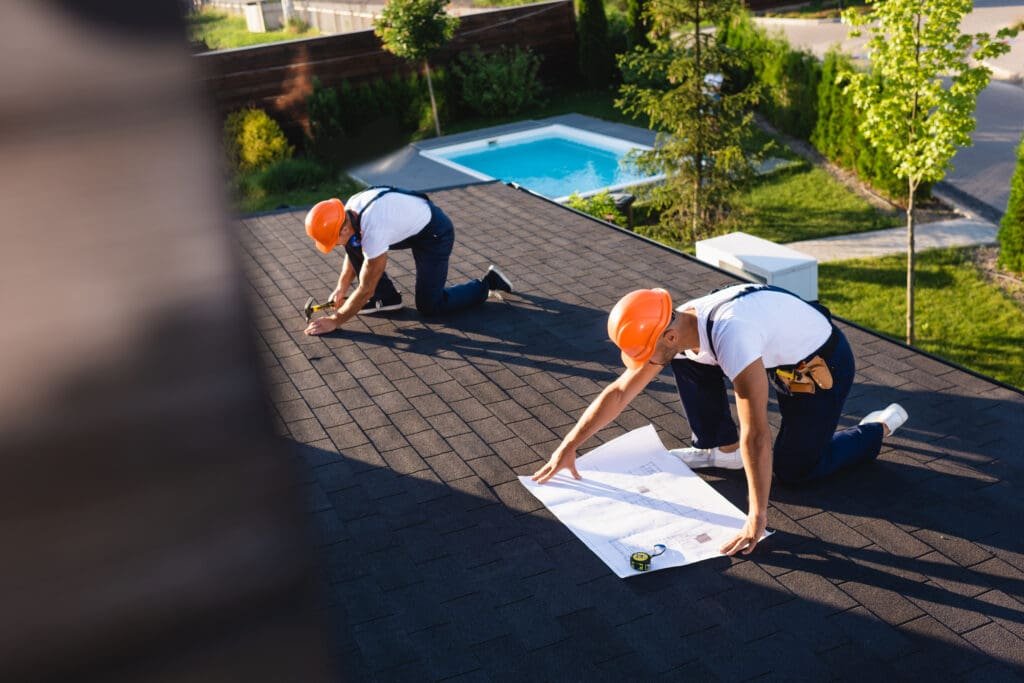Maintaining the integrity of your roof is crucial in protecting your home from the elements. However, over time, wear and tear can take its toll, leading to potential damage. It’s important to be aware of the signs indicating that it’s time to call for professional roof repair. By recognizing these indicators early on, you can prevent further damage and ensure the safety and longevity of your home.
Understanding the Importance of Roof Maintenance
Before delving into the signs of roof damage, it’s essential to understand the significance of regular roof maintenance. A well-maintained roof not only enhances the appearance of your home but also serves as a protective barrier against harsh weather conditions.
Regular roof maintenance involves inspecting for any signs of damage, such as missing shingles, leaks, or sagging areas. By addressing these issues promptly, you can prevent more extensive damage that may require costly repairs in the future. Additionally, proper maintenance can extend the lifespan of your roof, saving you money in the long run.
The Role of Your Roof in Home Safety
One of the primary functions of a roof is to provide protection and safety for your home and family. It shields your property from rain, snow, wind, and other external elements, preventing damage to the interior and ensuring the structural integrity of your house.
Roof maintenance is crucial for ensuring that your roof continues to provide adequate protection for your home. Regular inspections and repairs can help identify weak spots or potential issues before they escalate into more significant problems. By investing in routine maintenance, you are investing in the safety and security of your home.
The Lifespan of Different Roofing Materials
The lifespan of your roof largely depends on the type of material used during installation. For instance, asphalt shingle roofs typically last around 20-25 years, while metal roofs can last up to 50 years. Understanding the expected lifespan of your roofing material can help you gauge when it’s time for repairs or replacement.
In addition to the material used, environmental factors and maintenance practices can also impact the lifespan of your roof. Harsh weather conditions, such as heavy snowfall or high winds, can accelerate wear and tear on your roof. Therefore, it’s essential to consider these factors when assessing the condition of your roof and planning for its maintenance and potential replacement.
Common Signs of Roof Damage

Recognizing early warning signs of roof damage can save you time, money, and stress. Regular inspections, both inside and outside your home, can help you identify potential issues before they worsen.
When it comes to roof maintenance, being proactive is key. In addition to regular inspections, it’s essential to keep your gutters clean and free of debris. Clogged gutters can lead to water backup, which can seep into your roof and cause damage over time. By ensuring proper drainage, you can help extend the lifespan of your roof and prevent costly repairs.
Visible Leaks and Water Damage
One of the most apparent signs of roof damage is the presence of leaks or water damage. If you notice water stains on your ceiling or walls, it’s a clear indication that there is a problem with your roof. It’s crucial to address this issue promptly to prevent further deterioration and potential mold growth.
In addition to checking your interior living spaces for water damage, don’t forget to inspect your attic for any signs of leaks. Oftentimes, roof leaks can go unnoticed for an extended period in the attic, leading to extensive damage. Look for water stains, mold growth, or musty odors, as these can all point to a leaking roof.
Missing or Damaged Shingles
Inspecting your roof for missing or damaged shingles is another important step. Severe weather conditions, such as storms or strong winds, can cause shingles to become loose or even tear off completely. If you notice any gaps or noticeable damage to your shingles, it’s time to call a professional.
While examining your shingles, pay attention to the granules on the surface. Granule loss is a common issue that can indicate the age and condition of your roof. If you notice an excessive amount of granules in your gutters or on the ground, it may be a sign that your shingles are deteriorating and in need of replacement.
Sagging or Warping
If you observe any sagging or warping on your roof surface, it’s crucial to take action immediately. Sagging is often an indication of structural damage, and if left unaddressed, it can compromise the stability of your entire home. A professional roofer can assess the extent of the issue and provide the necessary repairs.
In addition to structural concerns, sagging roofs can also impact the energy efficiency of your home. A compromised roof can lead to poor insulation and air leakage, resulting in higher energy bills. Addressing sagging or warping promptly can help maintain a comfortable and cost-effective living environment.
The Risks of Ignoring Roof Problems

Choosing to ignore roof problems can have severe consequences for both your home and your health.
When it comes to the integrity of your home, the impact of neglecting roof issues can be far-reaching. Beyond just the surface-level damage, such as missing shingles or cracked tiles, lies the potential for significant structural damage. Water leaks, a common result of roof damage, can seep into various parts of your home, including walls, insulation, and even the foundation. This infiltration can weaken the entire structure over time, leading to sagging ceilings, warped walls, and in extreme cases, compromising the safety of the entire building. Addressing roof problems promptly is crucial to prevent such structural issues and avoid costly repairs down the line.
Furthermore, the repercussions of disregarding roof maintenance extend beyond the physical structure of your home. Neglected roof damage can create an environment conducive to the growth of mold and mildew. The moisture from leaks provides the perfect breeding ground for these harmful microorganisms, which can quickly spread throughout your property. Not only do mold and mildew pose serious health risks, such as respiratory issues and allergies, but they can also cause damage to your personal belongings, furniture, and other possessions. Tackling roof problems proactively is essential not only for the structural integrity of your home but also for safeguarding the health and well-being of its occupants.
When to Call a Roofing Professional
While minor maintenance tasks can often be handled by homeowners, there are instances when it’s best to call a roofing professional. Your roof is a critical component of your home’s structure, providing protection from the elements and ensuring the safety of your family and belongings. Knowing when to seek professional help can make a significant difference in maintaining the integrity of your roof.
One key factor to consider is the age of your roof. As roofs age, they become more susceptible to wear and tear, making them more prone to damage. If your roof is approaching or has surpassed its expected lifespan, it’s crucial to have a professional roofer assess its condition to determine if repairs or a replacement are necessary.
Evaluating the Extent of Damage
If you are uncertain about the extent of damage to your roof, it’s advisable to seek professional expertise. A qualified roofer will be able to assess the situation accurately and provide guidance on the necessary repairs or replacements. They have the knowledge and experience to identify hidden issues that may not be apparent to the untrained eye, ensuring that all problems are addressed effectively.
Additionally, a professional roofer will have access to specialized tools and equipment that are required to perform thorough inspections and repairs. By entrusting your roof to a skilled professional, you can have peace of mind knowing that the job will be done correctly and up to industry standards.
The Benefits of Professional Roof Inspection
Hiring a professional to conduct a roof inspection can be a proactive step in preventing future problems. Regular inspections allow experts to identify potential issues before they escalate, saving you money in the long run. Professional roofers are trained to spot signs of damage, deterioration, or poor installation, enabling them to address these issues promptly and effectively.
Moreover, professional roof inspections are often required for insurance claims or before selling a property. Having documentation from a certified roofer can streamline the process and ensure that any issues are properly documented for insurance purposes or during real estate transactions.
The Process of Professional Roof Repair

Understanding the steps involved in professional roof repair can help homeowners feel more informed and at ease during the process.
What to Expect During a Roof Inspection
During a roof inspection, a professional will carefully examine your roof’s condition, identifying any areas of concern. They will check for signs of damage, leaks, and evaluate the overall integrity of the roof structure. This thorough examination involves a close inspection of the shingles, flashing, gutters, and any other components that make up your roof. The roofer will also assess the ventilation system to ensure proper airflow and prevent moisture buildup. By conducting a comprehensive inspection, the roofing professional can provide you with an accurate assessment of your roof’s condition and recommend the necessary repairs.
Understanding Your Roof Repair Estimate
When hiring a professional for roof repair, it’s crucial to understand the costs involved. A roofing contractor will provide you with a detailed estimate that outlines the scope of work, including materials and labor. The estimate will also specify whether any additional repairs, such as replacing damaged decking or reinforcing the roof structure, are necessary. It’s essential to review the estimate carefully and ask any questions you may have before proceeding. By having a clear understanding of the costs upfront, you can make an informed decision and avoid any unexpected financial surprises.
The Repair Process and Timeline
Once you have agreed upon the repair plan, the roofing professional will begin addressing the issues identified during the inspection. Depending on the extent of the damage, the repair process may involve replacing damaged shingles, fixing leaks, repairing or replacing flashing, or even replacing the entire roof if necessary. The timeline for repair will vary depending on the extent of damage, the size of the roof, and other factors. Your roofer will provide you with an estimated timeframe and keep you updated throughout the process. They will work efficiently and diligently to ensure that your roof is restored to its optimal condition as quickly as possible.
By staying vigilant and recognizing the signs of roof damage, you can protect your home from further harm. Regular roof inspections and maintenance are essential to catch any issues early on and prevent them from escalating into more significant problems. Don’t delay in addressing these issues. Reach out to a trusted roofing professional who can help restore your roof’s integrity, ensuring the safety and longevity of your home.
Remember, a well-maintained roof not only protects your home from the elements but also enhances its overall curb appeal. So, invest in professional roof repair and enjoy the peace of mind that comes with knowing your home is well-protected.





